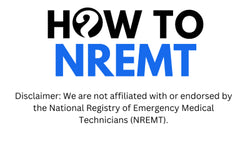Your Path to EMT Certification in Vermont Starts Here
Becoming an EMT in Vermont is a rewarding step toward serving your community and building a strong foundation in emergency medical care. Whether you’re fresh out of high school or making a career shift into healthcare, Vermont’s EMT certification process is straightforward and, with the right prep, totally achievable.
At How To NREMT, we’re here to guide you through every requirement, from completing EMT national training to passing the NREMT cognitive exam. With our comprehensive 10-step prep plan, one-on-one support from EMT tutors, and smart tools like our AI-powered NREMT tutor, we’ll make sure you’re not just ready — you’re confident.
Step 01

Check Eligibility
To enroll in an EMT course and qualify for certification in Vermont, you must meet a few basic requirements:
- Be at least 18 years old
- Have a high school diploma or GED
- Hold a valid BLS (Basic Life Support) CPR certification from an approved provider (usually required before class begins)
- Be able to pass a background check
- Plan to affiliate with a Vermont-licensed EMS agency before applying for licensure
While you don’t need to be affiliated with an EMS agency to take the course, Vermont does require official affiliation when you apply for your state EMT license.
Step 02

Enroll in a Vermont-Approved EMT National Training Program
The Vermont Department of Health requires completion of a state-approved EMT course, which typically includes:
- 150 to 200+ hours of classroom and hands-on instruction
- Clinical experience, such as ride-alongs with EMS teams
- Skill verification through practical evaluations
- Preparation for the NREMT cognitive exam
Top EMT national training options in Vermont include local technical centers, Vermont State College System schools, and community EMS providers. Programs blend lectures, skills labs, and clinical exposure so you feel ready for real-world response scenarios.
Step 03
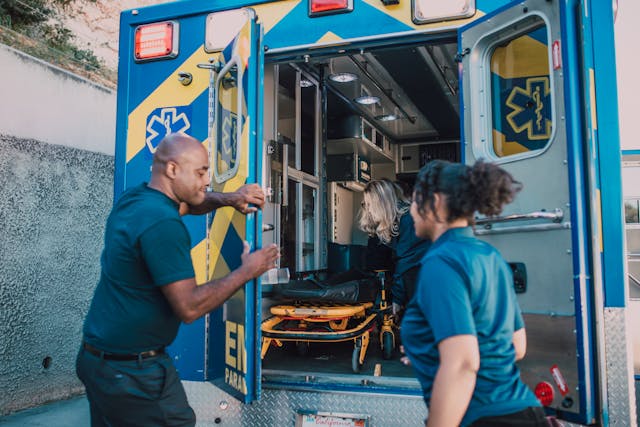
Earn Your CPR Certification
Before certification, Vermont requires that all EMT candidates hold a valid CPR certification for Healthcare Providers. This must include:
- In-person skills verification
- A course from AHA, Red Cross, or another CAPCE-accredited provider
Some EMT training programs include CPR/BLS certification as part of their curriculum — be sure to check this when enrolling.
Step 04

Pass the NREMT Cognitive Exam
Vermont uses the National Registry of Emergency Medical Technicians (NREMT) for certification testing. As of April 2025, the NREMT cognitive exam is organized into five domains:
- Scene Size-Up & Safety(15–19%) – assessing hazards, PPE, and triage
- Primary Assessment(39–43%) – evaluating airway, breathing, and circulation
- Secondary Assessment(5–9%) – conducting full-body assessments and medical histories
- Patient Treatment & Transport(20–24%) – delivering emergency care and preparing for transport
- Operations(10–14%) – documentation, communication, and provider wellness
The updated exam includes Technology-Enhanced Items (TEIs) like drag-and-drop, multi-select, and image-based scenarios to simulate real EMS decision-making.

How To NREMT Can Help You Master the Exam:
Our 10-step study system is purpose-built for the new exam format. It includes:
- 2,000+ practice questions, TEIs included
- A realistic exam simulator that scores like the actual NREMT
- Interactive masterclass videosa ligned to each domain
- A 24/7 AI NREMT tutor("Mr. How To") for quick concept reviews
- Live Zoom coaching sessions with experienced NREMT prep tutors
Many students credit our platform with helping them understand how to think like the exam, not just memorize answers.
Step 05
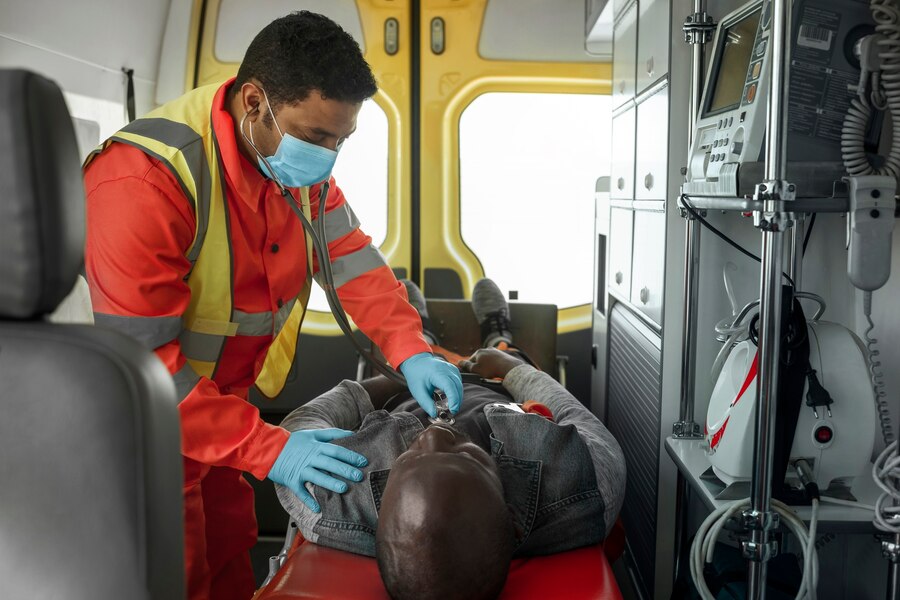
Practical Skills Evaluation – Conducted During Training
Vermont no longer requires a separate psychomotor (NREMT) skills exam. Instead, EMT instructors assess practical skills during your training program. You'll demonstrate proficiency in key areas like:
- Airway and breathing management
- Trauma and bleeding control
- Cardiopulmonary resuscitation (CPR)
- Patient assessment and transport
Your course instructor will verify your skills and report your eligibility to take the NREMT cognitive exam.
Step 06
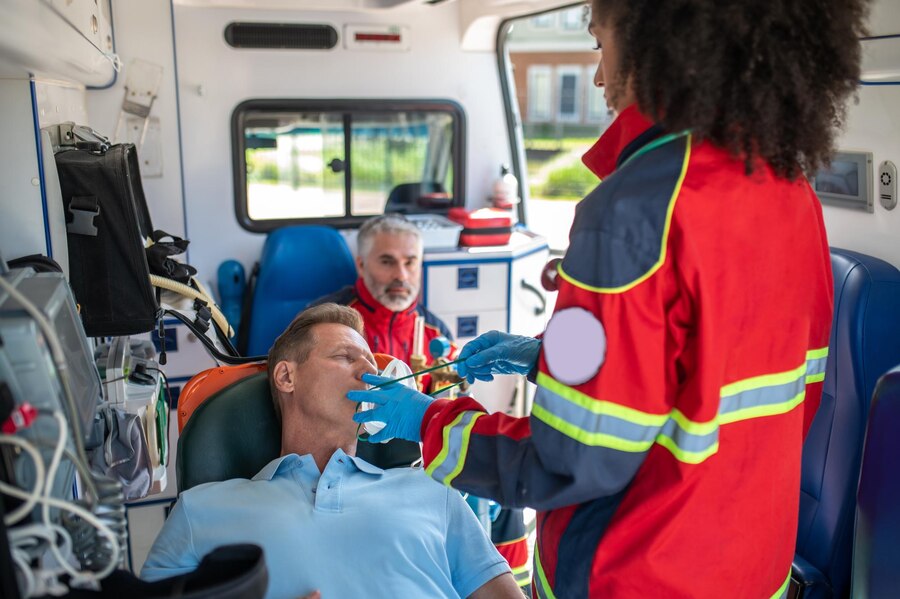
Apply for Vermont EMT Licensure
After passing the NREMT cognitive exam and completing your training, you’re ready to apply for EMT licensure through the Vermont Department of Health – EMS Office.
Here’s what you’ll need:
- Proof of EMT course completion (instructor submitted)
- NREMT exam results
- Current CPR certification
- Background check results
- Online application via the Vermont EMS Licensing Portal
Once your application is approved, you’ll officially be certified as an EMT in Vermont — ready to respond to emergencies and save lives.
Vermont vs. National Certification Requirements
| Requirement | NREMT (National) | Vermont (State) |
|---|---|---|
| EMT Training | Accredited EMT course (~150+ hours) | Vermont-approved EMT course |
| CPR Certification | Required with hands-on skills eval | Required (AHA or equivalent with skills test) |
| NREMT Cognitive Exam | Required | Required |
| Skills Exam | Phased out nationally | Evaluated during EMT course by instructors |
| Age Requirement | Varies by state | Must be 18 years old |
| Background Check | Required by state law | Yes – reviewed by the Vermont EMS Office |
| Application | Apply for the NREMT Registry | Apply via VT EMS Portal after passing NREMT |
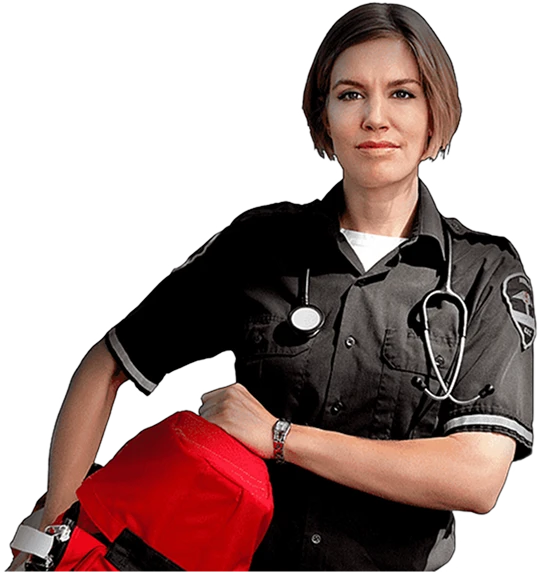
- Choosing a selection results in a full page refresh.
